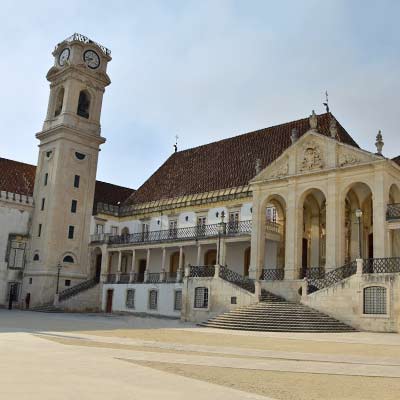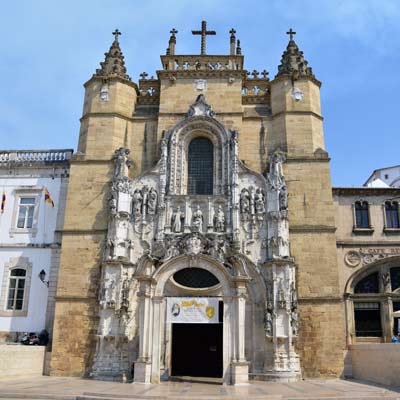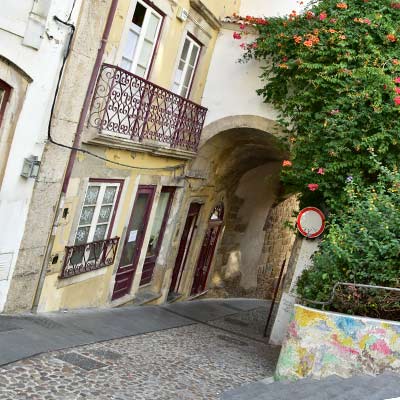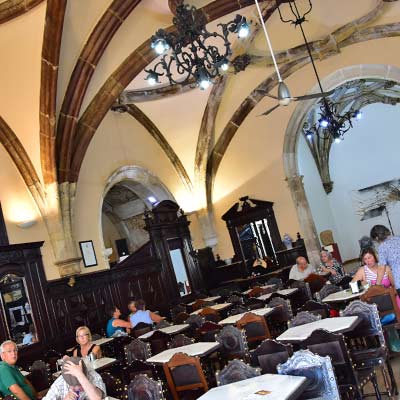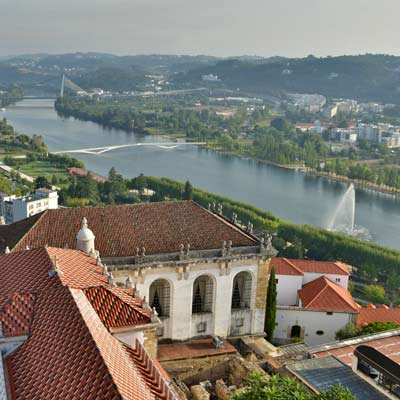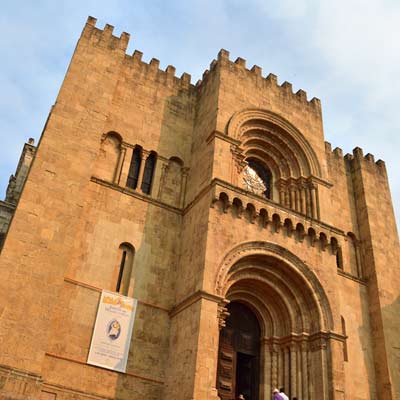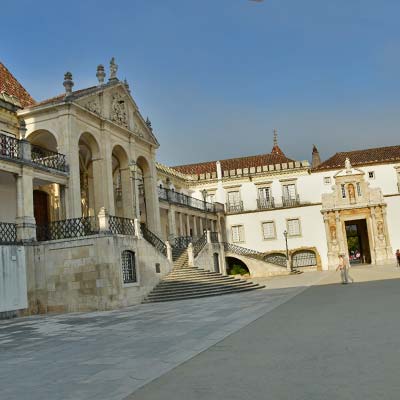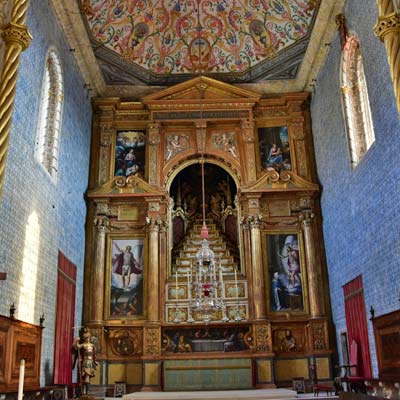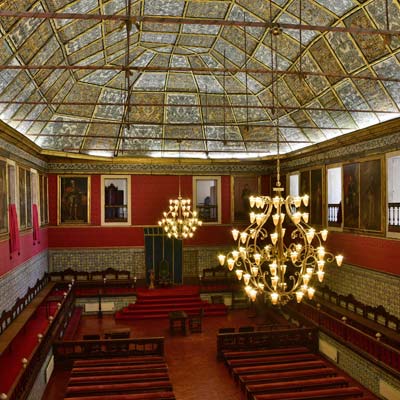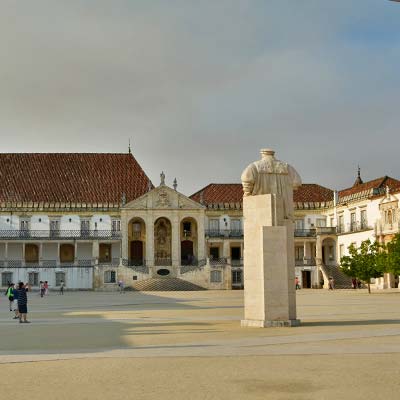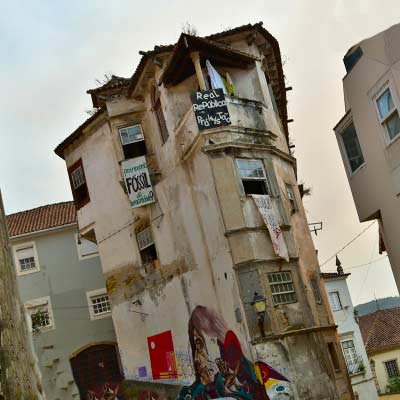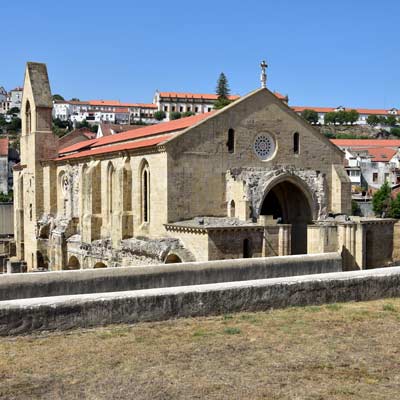MyPortugalHoliday.com
The best independent guide to Central Portugal
MyPortugalHoliday.com
The best independent guide to Central Portugal
Coimbra, Portugal in 2025: an independent travel guide
For over a century, Coimbra was the medieval heart of a fledgling Portugal, a proud capital city perched on the banks of the Mondego River. Today, that rich history is inseparable from the vibrant, youthful energy of its university, one of the oldest in the world. This compelling blend of ancient tradition and progressive student life makes Coimbra one of central Portugal's most fascinating destinations.
The soul of the city resides in its historic university, crowning the highest hill. Here you can discover magnificent courtyards, grand halls, and the breathtaking Biblioteca Joanina, a lavish Baroque library considered one of the world's most beautiful. The university is not just a monument; it is a living institution whose deep-rooted academic traditions infuse every corner of the city.
Descending from the university reveals a steep maze of cobbled streets that form the old town. This historic core uncovers layers of history, from the formidable Romanesque Sé Velha cathedral to remnants of Moorish archways. It is in these intimate alleyways that you can experience the unique Coimbra Fado, sung exclusively by male students.
Coimbra is often treated as a brief stop between Lisbon and Porto, yet it is a city that rewards those who linger. Its combination of monumental history, a thriving artisanal scene, and a lively atmosphere offers a depth of experience that cannot be appreciated in just a few hours.
This guide provides everything you need to explore Coimbra, helping you make the most of your time in this historic and vibrant university city.
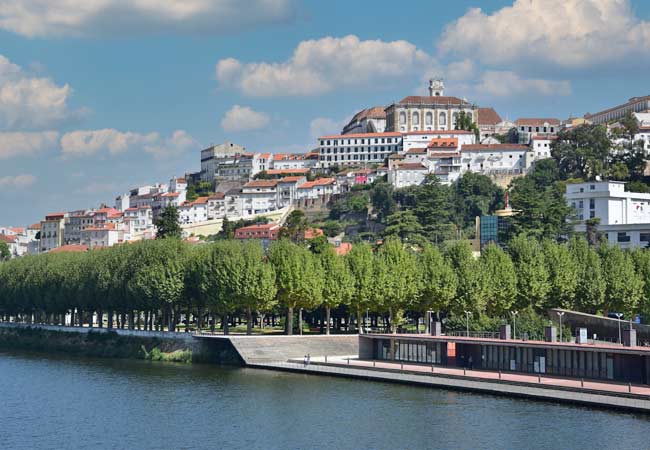
The university complex stands high above the rest of the city and the Mondego River
The best of Coimbra
Coimbra Needs More Than 2 Hours!
Many tourists visit Coimbra as part of a coach or guided tour, which typically spends less than two hours in the city. This brief time barely scratches the surface of this vibrant destination.
Coimbra requires, at minimum, one full day of sightseeing, while the day trips and attractions in the surrounding region could extend a visit to four or five days. The city offers the largest selection of restaurants and liveliest nightlife in central Portugal and is an enjoyable base for exploring the region.
Even if you are limited by time, it is worth spending at least one night in the city before heading to your next destination.
Coimbra as a day trip
Coimbra is a fascinating destination for a day trip and is highly recommended when travelling between Lisbon and Porto.
Below is an interactive map of our suggested one-day tour of Coimbra. The tour begins and ends at the train station.
Sights along the tour route: 1) Igreja de São Tiago 2) Café Santa Cruz 3) Igreja de Santa Cruz 4) Jardim da Manga 5) Porta de Barbacã 6) Torre de Anto 7) Sé Velha 8) Museu Nacional Machado de Castro 9) Sé Nova 10) Aqueduto de São Sebastião 11) Jardim Botânico 12) Biblioteca Joanina 13) Torre da Universidade de Coimbra 14) Parque Verde do Mondego 15) Ponte Pedonal Pedro e Inês 16) Mosteiro de Santa Clara-a-Velha 17) Mosteiro de Santa Clara-a-Nova 18) Portugal dos Pequenitos 19) Ponte de Santa Clara
The above route is 8 km and involves climbing some very steep hills around the university. The day can be shortened by excluding the Parque Verde do Mondego (14) and the Ponte Pedonal Pedro e Inês (15).
Within Coimbra, there are two distinct sections of the city: the Cidade Alta (high town) and Baixa (lower town). The medieval city was divided between social classes, with the nobles and clergy at the highest point of the city, whilst the poor lived close to the Mondego River, which frequently flooded. This social division is still visible today in the architecture – look for the ornate balconies and baroque doorways in the upper town, while the lower town features colorful tiles and practical stone flood marks showing historic water levels.
The university complex is found at the top of the city, with the vibrant Baixa district further down the hill, where the shops, bars and restaurants tend to be concentrated. Local students say climbing the steep steps between the two districts brings good luck – but only if you ascend them all in one go without stopping to catch your breath!
Have you considered a small group tour to Coimbra?
An organised tour is an excellent way to discover Coimbra and its surrounding region. Tours provide knowledgeable guides and can include more sights in a single day. Some of the best tours include:
• Coimbra and Aveiro full-day tour from Lisbon
• Coimbra and Fátima from Porto
• Coimbra and Buçaco from Porto
Day Trips from Coimbra
There is much to explore within the Coimbra region, with many enjoyable day trips possible.
• Conímbriga Roman Ruins (14 km southwest)
The Roman ruins of Conímbriga are regarded as some of Portugal's finest and include the largest Roman villa in western Europe, along with beautifully preserved mosaics. The highlight is the House of Fountains, where the original Roman hydraulic heating system remains intact, and intricate geometric mosaics depict hunting scenes and mythological figures.
• Buçaco National Forest (20 km north)
The tranquil Buçaco forests were cultivated by Carmelite monks as a retreat from the outside world. The forest contains the grand Fonte Fria, a spring-fed water cascade, and the wondrous Buçaco Palace, along with scenic hiking trails. [The Palace Hotel, built in 1907 as a royal retreat, combines Gothic, Manueline, and Renaissance styles with its elaborate stone carvings and battlements.
• Figueira da Foz (40 km west)
Along the coast lies Figueira da Foz, with its magnificent beach, a favourite destination amongst the Portuguese during the summer months. The beach here is known as 'Rainha das Praias' (Queen of Beaches) due to its unusual width – it's one of Europe's widest urban beaches.
• Schist Villages (Aldeias do Xisto) (35-50 km east)
With a car, you could explore the scenic Schist Villages, which extend over the Serra da Lousã hills and the Zêzere river valley. This is a stunning region of lush forest, mountains and ancient hamlets with houses constructed from dark schist stones. .
Hotels in Coimbra
The map below shows the location of the best hotels and accommodation in Coimbra. If you adjust the dates to your stay, it will display current prices and availability.
Coimbra tourist sights
Coimbra University
The University of Coimbra has over 20,000 students spread across eight faculties, but only the former royal palace complex is of interest to visitors. The majority of the university is housed in utilitarian 1960s tower blocks, which are rather characterless and incongruous with historic Coimbra's aesthetic.
The Alcaçova Palace was donated to the university by King João III in 1537. This historic university building is centred around the Paço das Escolas plaza, with three wings and an open side overlooking the city.
Open to visitors are the Royal Palace staterooms, the Biblioteca Joanina, the Capela de São Miguel and the Torre da Universidade.
The Biblioteca Joanina is a magnificent Baroque library containing over 200,000 books and, fascinatingly, a colony of bats that helps protect the books from insects! Each evening, staff cover the baroque tables with leather sheets to protect them from bat droppings, and students claim hearing the flutter of bat wings at dusk brings good luck for exams.
The Royal Palace contains many grand staterooms, including the Sala dos Atos Grandes, the former throne room now used for university ceremonies.
The decorative Capela de São Miguel was the king's private chapel and is adorned with beautiful azulejo tiles. Time your visit for noon to hear the unique baroque organ being played – its trumpets protrude horizontally from the wall, creating an unforgettable visual and acoustic experience
The Torre da Universidade was constructed as a clock tower and provides wonderful panoramic views of Coimbra from its summit.
The university botanical gardens can also be visited, but these are accessed via 125 steps-keeping all the students fit!
The admission fee to view all of the historic university buildings is €12.50, or €7 excluding the library. Entry to the Paço das Escolas is free.
Travel Tip: The Biblioteca Joanina is the highlight of any visit, but tickets are sold with specific entry times. Spaces often sell out, so either visit early in the day or book tickets through the Coimbra university website.
visit.uc.pt/pt/program-list
Repúblicas de Coimbra
The Repúblicas de Coimbra are the traditional student houses found throughout the city. Often adorned with provocative or radical posters and urban art, they were originally commissioned by King Dinis in the 14th century. They have consistently been associated with progressive politics and avant-garde ideas.
Look for the República Bota-Abaixo on Rua do Loureiro – its residents maintain the tradition of offering a free soup dinner to any hungry student, marked by a green light above the door.
Mosteiro de Santa Clara-a-Velha
The 14th-century Mosteiro de Santa Clara-a-Velha sits on the left bank of the Mondego but was abandoned in 1647 after the complex experienced routine flooding during winter rains. Only in 1995 was the submerged level excavated, revealing remarkably well-preserved structures.
Saint Isabel and her roses
Coimbra is the setting for the beloved Portuguese tale of Queen Isabel de Aragão. During the famine of 1293, Queen Isabel would secretly donate food to the poor from the royal kitchens, unknown to King Dinis I. According to legend, one day the queen was caught by her husband hiding bread under her apron. When the king demanded to see what was concealed beneath her clothes, the bread miraculously transformed into roses.
Queen Isabel was beatified in 1526 and, as local tradition holds, her coffin inside the tomb at the Mosteiro de Santa Clara-a-Nova is said to emit the fragrance of roses.
Travel to Coimbra
Coimbra enjoys excellent public transport connections, serving as a major stop on the main north-south railway line and functioning as a bus hub for the entire region.
Frequent express train services connect Coimbra to Lisbon and Porto. Journey times are swift (1 hour 36 minutes from Lisbon, 1 hour 12 minutes from Porto) and reasonably priced: €25.70 for Lisbon to Coimbra (single) and €18.70 for Porto to Coimbra (single). This excellent connectivity makes Coimbra an ideal stop for those touring Portugal via public transport.
Related articles: Lisbon to Coimbra – Porto to Coimbra
Traditional Food and Dining in Coimbra
Coimbra's cuisine reflects its status as both a historic royal capital and a vibrant student city. The city offers everything from traditional Portuguese restaurants to affordable student cafés.
Local Specialties:
Chanfana is the region's most famous dish – slow-cooked goat in red wine, traditionally prepared in black clay pots. The best chanfana is served on weekends at traditional restaurants in the nearby village of Miranda do Corvo, where the dish originated among poor shepherding families.
Pastéis de Tentúgal, delicate pastries made of thin, crispy layers of dough filled with egg cream, originated in the nearby town of Tentúgal. The original recipe was created by nuns at the Carmelite Convent and is still made by hand by a small number of certified local producers.
Arrufadas de Coimbra are sweet breakfast rolls lightly flavoured with cinnamon and lemon zest. The best ones can be found fresh from the oven at Pastelaria Briosa on Rua Ferreira Borges, especially early on Sunday mornings.
Student Dining Culture:
The historic Café Santa Cruz, housed in a former chapel next to the Igreja de Santa Cruz, is a must-visit for its architectural splendor and traditional pastries. Try their house specialty crúzios with a meia de leite (coffee with milk) while admiring the Gothic arches and vaulted ceilings.
Many traditional restaurants offer an economical menu do dia (daily menu) at lunchtime, which includes soup, main course, dessert, and coffee for around €10-12. These are especially good value around the university area.
Where to Eat:
For traditional Portuguese cuisine:
Restaurante Zé Manel dos Ossos in the Baixa district. Known for its walls covered in customer-written notes and its house specialty of grilled pork ribs.
For student atmosphere:
A Serenata, near the university. Order the filling bitoque (steak, egg, and chips) – a student favorite for generations.
For regional wines:
Try the local Bairrada wines, particularly the sparkling varieties produced in this region. Many restaurants offer house wines directly from local producers at excellent prices.
Discover more of central Portugal with our guides
